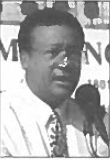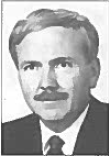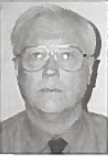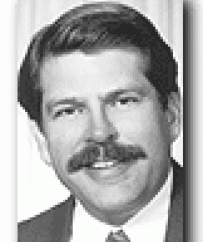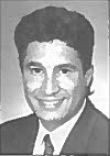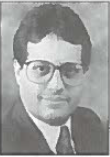“There is positive change in Los Angeles” proclaims the final report of Rebuild L.A., formed by then-Mayor Bradley in the days following the 1992 Riots/Civil Disturbances. How far have we come? How did the riots affect our civic leadership, our land-use planning and our willingness to invest in our City? To mark the fifth anniversary of the tumult in Los Angeles, TPR asked its readers for their thoughts.

Sharon Morris: "The symptoms and causes that led to the unrest did not develop overnight and the solutions cannot all be in the short-term."
Leon Ralph, Bishop and Chairman, Interdenominational Community Development Corp.
"The scars definitely remain from the tumultuous events of April l 992. Like a recovering heart attack victim's diagnosis, the nutrient carrying arteries of our city—civil discourse and tolerance, investment and hope—were severely impaired. But the vitality of our people and neighborhoods (physically and spiritually), the dreams and aspirations of our youth and their parents… have compelled all of us to rehabilitate and reinvest in our ourselves and in one another.
Clearly, the devastation has not been fatal; life signs are everywhere… especially in newly built affordable housing developments like Adams Congress Apartments. We must take notice of our modest recovery and push on."
John Molloy, Administrator, Community Redevelopment Agency
"The Community Redevelopment Agency of the City of Los Angeles has set the process of recovery from the 1992 Civil Disturbances as its highest priority. In the five years since 1992, the Agency has formed nine new redevelopment project areas and engendered $240 million in total investment in the areas most affected. This ‘platform’ will allow us to be even more effective over the next five years."
Allan Kingston, President, Century Housing Corporation
"The aftermath of the fires of 1992 proved that neither government nor good intentions alone will rebuild our communities. The will to succeed must be stronger than the collective forces that resist change."
Zev Yaroslavsky, Chairman, L.A. County Board of Supervisors
"The riots were a defining moment in LA's history—an unprecedented challenge to our survival and prosperity as a modern metropolis. Since then, we've revived our political leadership, regained our self-confidence, and rebuilt our community. We're not there yet, but we're well on the way."
Larry Kosmont, Kosmont & Associates
"The first five years have brought more attention than remedial action to the prevailing issues of economic dislocation in South Central. Where are the Community Development Bank loans and will they occur with enough critical mass to make a difference? If the next five years aren't more productive from an implementation perspective, then L.A. will be forced to admit that the
1992 Riots have been relegated to a media event; and media events are frequently repeated."
Linda Griego, President, Rebuild Los Angeles
"A tremendous amount of rebuilding has occurred in five years. Many businesses rebuilt, repaired and added new stores in damaged areas. But much remains to be done. Some portray progress in urban communities as the ‘glass is half empty.’ I view the progress made as the ‘glass is half full.’”
Fred Gaines, Esq., Reznik & Reznik
"From a valley perspective, the riots were always a surreal event; while we knew it was happening in our City, it always seemed to be very far away. That sense of distance remains and manifests itself in both the Valley secession movement and the failure to deal with the true root causes of the riots."
Monty Hempel, Professor, Center for Politics & Economics The Claremont Graduate School
''The ideals of community are being washed away by a rising tide of inequality. The events of 1992 have not fundamentally altered the flow of resources or injustice but merely deepened the resolve of the rich to isolate the anger of the poor. Only a small segment of our population has internalized the lesson that, in an era of television, the rich cannot prosper for long without the progress of the poor."
Carol Baker Tharp, Exec. Director, Coro Southern California
"If my only knowledge of the community came from news reports, I guess I'd be worried that Angelenos have a horribly short memory. But every day at Coro I see community people working hard to clean up graffiti, plant street trees, put on health fairs, plan for new community centers and other good things, so I'm optimistic. I know problems persist, but there are people in all our neighborhoods doing their part to make it better."
Gail Gordon, Esq., Pillsbury Madison & Sutro LLP
"South Los Angeles has experienced a rebirth since April, 1992. Adoption of ordinances to preserve community values and plans to rebuild the Coliseum and construct an arena and stadium show renewed optimism about the economic and social well-being of this
neighborhood."
Sharon Morris, Deputy Mayor, City of Los Angeles
"As many others have noted, the events of April 29, 1992 were a wake-up call to the leadership of Los Angeles, the State and the nation. What 1992 showed us is that feelings of disconnectedness and disenfranchisement in Los Angeles are not confined to the economically disadvantaged or any one part of the City. The riots had repercussions Citywide. More importantly, we learned that we needed to change the way that we relate to our neighbors, communities, government structures and the City as a whole.
"The symptoms and causes that led to the unrest did not develop overnight and the solutions cannot all be in the short-term. But we have come a long way in five years. Since 1992, there has certainly been a revived interest in neighborhoods at all levels. More people are getting involved in their communities, taking control of their neighborhoods and their schools, developing a pride of ownership. The Mayor and City Council are actively developing neighborhood programs, and already seeing positive results. Federal funding is expanding for local neighborhood programs, such as the Mayor's nationally-acclaimed Los Angeles Neighborhood Initiative (LANI) which now operates in eight communities and is currently expanding to twelve.
"In South Los Angeles economic development and land-use issues, which were neglected for far too long, are finally on the City's front burner. The Community Development Bank is up and running, providing financing and seed capital to help job-creating businesses grow. RLA has provided tremendous information about the businesses, jobs and economy of the area for planning purposes. New investment is evident. Residents and other stakeholders have taken a very active interest in the rebuilding of their communities, securing needed services such as grocery stores and avoiding negative uses such as liquor stores.
"I know that most people see the vacant lots scarring the South L.A. landscape five years later as a sign of failure. I do not. I see them as opportunity. Opportunity for the City to correct past land-use designations that no longer serve the neighborhoods they impact. Opportunity for new types of housing, neighborhood services and economic development that will truly serve the adjacent neighborhoods, even if it takes a few more years to attract and build them. Let us support the City and these communities in taking advantage of these opportunities.”
- Log in to post comments



